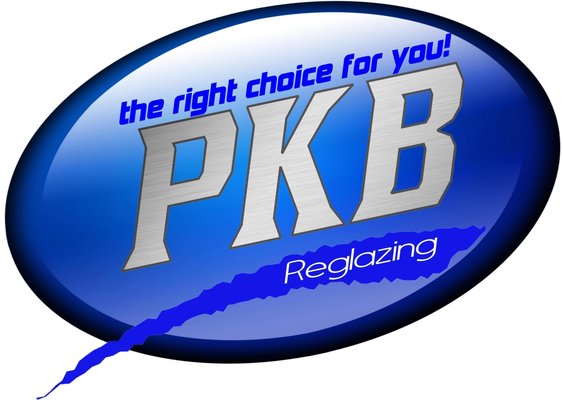Unlicensed Bathtub Reglazing: California
As the owner of a Professional Reglazing Company (PKB Reglazing, Inc) that has completed over 9,500 reglazing jobs in Southern California, employs 14 technicians, 5 office staff, and carries Workers Compensation and General Liability Insurance, I have felt the need lately to write about the deception among internet advertising for "Professional" Reglazing Companies.
Over time I have come to see how Contractors and Handymen seem to slip under the radar of the Contractors State License Board of carrying expenses and costs.
Claiming to only do work under $500 (labor and material): This is probably the most commonly used excuse for a contractor or handyman to getting a license. It is true that if you do a job under $500 it is legal, however what most do is barely slide the price under $500 or convince you that breaking it up into separate $500 payments is acceptable. Or breaking up the job into separate parts so that each invoice will be under $500...this is illegal.
Here is a video showing SWIFT (Contractors State License Boards "Statewide Investigative Fraud Team" setting up a few different Unlicensed Contractors and then arresting them on the spot.
The one thing to think about is, why would someone be willing to run their own business, but not take the step to getting licensed. It personally costed me $500 to get licensed as a Bathtub Reglazer. One of the answers is they do not want to go through the Required Background Check or Fingerprinting process.
Stating they are exempt from Workers Compensation Insurance: The Contractor will state that he alone does the work and has 0 employees. The law states that if you have one or more employees you are required to have Workers Comp. There are many reglazing companies that state this but have employees entering your home. Without workers compensation insurance, the homeowner becomes the responsible party. This also allow the handyman or contractor to reduce his prices, pay someone under the table, not have to report the employee to the state for taxes, etc......simply unfair.
A simple way to check on this is to ask the person on the phone the name of the Technician that will be doing your work? If they give a name different from their own...then they need to have workers comp.
Some who are licensed advertise that they are bonded: This is not as obvious but advertising that you are BONDED is actually illegal. Simple fact but posted by many to try to make you feel safe. Just keep in mind that anyone who does this does not know the law enough not to.
Below are some definitions and codes from the State License Board Reference Book that bring specific clarification on the Laws.
“Advertising” Defined
As used in Section 7030.5 of the Code, the term “advertising” includes but is not limited to the following: any card, contract proposal, sign, billboard, lettering on vehicles registered in this or any other state, brochure, pamphlet, circular, newspaper, magazine, airwave or any electronic transmission, and any form of directory under any listing denoting “Contractor” or any word or words of a similar import or meaning requesting any work for which a license is required by the Contractors License Law. (Authority cited: Section 7008, Business and Professions Code. Reference: Section 7030.5, Business and Professions Code.)
§ 7071.13. Reference to bond in advertising, soliciting, or other presentments as ground for suspension of license Any reference by a contractor in his advertising, soliciting, or other presentments to the public to any bond required to be filed pursuant to this chapter is a ground for the suspension of the license of such
contractor. Added Stats 1963 ch 1972 § 4, as B & P C § 7071.8. Renumbered Stats 1967 ch 1604
§ 4, operative July 1, 1969.
WORKERS’ COMPENSATION INSURANCE COVERAGE
General Requirements
All contractors are required to submit proof of workers’ compensation insurance coverage as a condition of licensure, to maintain a license, to activate an inactive license, or to renew a license, unless they are
exempt from this requirement. (See B&P Code §7125.1.) CHAPTER 2. YOUR EXISTING LICENSE: MAINTAINING AND CHANGING IT 35
Exemptions Contractors who do not have employees working for them (except C-39 Roofing licensees) are exempt from the requirement for workers’ compensation insurance, but they will be required to file a certification of this exemption with the Registrar. Neither insurance coverage nor the exemption is required for an inactive license. NOTE: All contractors with a C-39 Roofing classification are required by B&P section 7125 to have a Certificate of Workers’ Compensation Insurance or a Certificate of Self-Insurance on file with CSLB and are not eligible for exemption.
Employer Liability
An employer-contractor is REQUIRED to provide weekly benefit
payments (indemnity) and necessary medical and hospital treatment
to all of his or her employees for work-incurred injuries and illness.
This liability of the employer extends to employed relatives on the
same basis as any other employee.
If the employer has one or more employees, even part-time, he or she
is required to insure for workers’ compensation claims. An “owneroperator” or “independent contractor” should consult an attorney to
determine insurance liability and should pay particular attention to
Labor Code §2750.5

